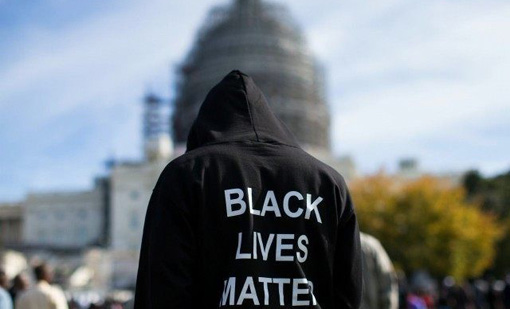
This has been a gut-wrenching time. The horrific police murders of Alton Sterling and Philando Castile and the killing of five police officers in Dallas give the uneasy sense of a nation on edge. Have we entered a more hateful and polarized era? Or is real progress toward racial and social justice possible?
It is a moment full of great danger, but also great possibility. Actions in the streets, conversations around the dinner table, and especially the outcome of the 2016 elections will be decisive to which direction the nation takes.
Impact on 2016 elections
Like the Orlando massacre, the tragic events in Baton Rouge, La., Falcon Heights, Minn., and Dallas are reverberating in the 2016 elections. On cue, Donald Trump declared he would be a strong “law and order” president.
This conjures up images of the 1968 campaign of Richard Nixon who ran on a “law and order” platform. These thinly-disguised code words were aimed to appeal to whites based on fear and racism – part of the Southern Strategy. Nixon succeeded in winning a substantial section of white voters on this basis, which led to a backlash against civil rights, women’s rights, and the social gains of the 1960s. It was the beginning of a broader attack on the New Deal gains. Racism was central, for instance, to the rise of the extreme right and its takeover of the GOP, the victory of Ronald Reagan in 1980, and the further repeal of social gains.
Racism has been a central thread throughout our nation’s history dating to slavery. After 50 years of GOP and right-wing racism being injected into the veins of the body politic, we are confronted with the likes of Donald Trump. Racist ideas that once existed on the fringe are now being made acceptable to the mainstream. They have found some fertile ground in an era of economic dislocation and decline and the rapid demographic shifts that are unsettling millions, particularly white working people.
At moments like this, whites without anti-racist consciousness are susceptible to demagogues like Trump, easily taken in and manipulated by racist stereotypes, bigotry, and disoriented to act against their self-interests. Especially for working class whites, particularly white men, whose anger and frustration over their own bleak future is being misdirected away from their class enemy toward their black and brown class brothers and sisters.
Instead of taxing the rich, they will get more enrichment of the one percent. Instead of a living wage, they will get continued declines in real wages and greater economic insecurity.
Racism and the fight for unity
The corporate mass media paints the picture of a racially polarized nation – black vs. white. In truth, life is much more complex.
It has been well-documented, beginning with the groundbreaking Kerner Commission report on the 1967 urban rebellions, that most whites view the same developments differently than African-Americans. This perception gap stems from the different social realities blacks and whites experience due to segregation and institutionalized racism as well as the impact of racist ideas and practices.
Whites who are ignorant of what is occurring in the African-American community are especially vulnerable to racist ideas. The latest surveys indicate that nearly 40 percent of whites are sympathetic to the aims of the Black Lives Matter movement, including 50 percent of white youth. For sure, there is a core of diehard intractable racists. But there are also large swaths of whites that can be won to anti-racist positions, depending on the circumstances and issues.
Greater awareness of the reality of racism and growing empathy toward its victims is an important first step toward then taking action. The challenge is to find the points of unity, to expand and deepen this anti-racist sentiment, and to influence a majority of whites to act on the basis of morality, common humanity, and self-interest.
Only eight years ago, the first African-American was elected president on the basis of an outpouring of anti-racist majority sentiment. The victory didn’t end racism, but represented a blow against it. But before President Obama stepped foot into the Oval Office, reactionary forces were plotting to obstruct and undo his presidency. Racism was then and remains now the core element of the assault.
The movement led by Black Lives Matters and its allies is influencing millions of whites. Issues and perspectives that had only been discussed on the margins among whites are discussed increasingly in the mainstream.
Videos of police killings spread on social media have profoundly impacted public consciousness. Many whites are becoming aware of a reality they knew little or nothing about. This can be likened to the impact from the images of police dogs and fire hoses unleashed on African-American demonstrators in the South or the gruesome horror of the Vietnam War brought into living rooms through television during the 1960s.
The transformative potential of today’s exposure to images of police violence, protests, and the public discussion shouldn’t be underestimated – even if changes aren’t apparent right away. Changing consciousness is a contradictory process. It takes time to absorb lessons and re-examine old ideas and prejudices and make way for new ideas.
Majorities make change. And it will take a majority that feels compelled to act over the police killings and institutionalized racism to make change. When taken together, communities of color, the multi-racial labor movement, the young generation, and a substantial number of whites horrified by what is happening, constitute an anti-racist majority.
2016 elections victory a strategic necessity
The 2016 elections offer an extraordinary opportunity for the anti-racist majority to frame the debate and to engage millions of our fellow Americans, especially white Americans. Anti-racist whites have a special responsibility to act.
The stakes have never been higher. Defeating Trump and dislodging the GOP from its domination of Congress and state legislatures is a strategic necessity to advance racial justice. And it is integrally connected to advancing gender equity, and the rights of the LGBTQ community, immigrants, and workers, and action on climate change.
The outcome will determine what laws are passed, how they are enforced, and how the judiciary might rule on them. It will determine the nature and direction of the public discourse and the overall atmosphere in the country.
“To bring about the kind of change we need, we need to ensure that every demonstrator is a voter and that we show up en masse and in the millions,” NAACP president Cornell William Brooks said on CBS’s Face the Nation.
Donald Trump and Hillary Clinton present the nation with two starkly different paths. Clinton’s campaign reflects a multi-racial coalition, and her administration will mirror the diversity of the American people. Clinton has addressed reforming the criminal justice system, institutionalized racism, and responded to the killings of Alton Sterling and Philando Castile, telling CNN:
“I will call for white people like myself to put ourselves in the shoes of those African-American families who fear every time their children go somewhere, who have to have the talk about how to really protect themselves when they’re the ones that should be expecting protection from encounters with police.”
A Clinton win would be a victory for racial and gender justice.
But what gains are likely under “law and order” President Trump and a GOP Congress? His daily incendiary rhetoric, calls for banning Muslims, building a wall with Mexico, his likely appointment to lead the Justice Department, and racist nominations to the US Supreme Court – all of these would ensure the fight for racial justice and any social progress will be immensely harder.
Election Day 2016 is time for the anti-racist majority, horrified by recent events, to act. It couldn’t be more urgent.
Photo: A Black Lives Matter demonstrator outside the U.S. Capitol building. | AP/Evan Vucci









